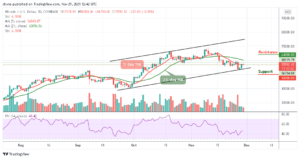When you deposit your money in the bank, you are technically lending money to the bank. Banks in return give you interest at a particular rate. Now imagine the same situation in the world of cryptocurrencies. You lend your crypto assets and in return you get interest.
That’s what crypto yield farming is in a nutshell. Crypto yield farming is making headlines in the world of cryptocurrencies especially in the field of DeFi (decentralized finance world). But what is so special about it? In this article, ,we will take you on the journey of crypto yield farming and how you can make the most of it.
What is Crypto Yield Farming?
As we mentioned earlier, “crypto yield farming” is the practice of placing or lending cryptocurrencies to generate high returns or rewards in the form of additional cryptocurrency. However, the major difference between the lending process in banks and the world of cryptocurrencies is, the latter is open to all. Unlike banks, you don’t need to submit your ID proof to take part in the process. An active internet connection is all you need.
As an investor you stake your crypto assets in a lending protocol through decentralized app (dApp). And then from there, other investors borrow your assets to use for speculation. The lending process is usually done through smart contracts.
Crypto yield farming is one of the driving forces that has allowed crypto market capitalization to take a massive leap from $397 billion in 2020 to $1.9 trillion in 2021. Further, it is due to yield farming that TVL (total value locked) in DeFi rose to $16 billion in December 2020, from merely $1 billion in January 2020. Sounds interesting right? Now, let’s see how crypto yield farming actually works.
Crypto Yield Farming: The Basic Strategies to Make It Work
Crypto yield farming offers rewards to investors for blocking their cryptocurrency assets in the DeFi market. Basically, yield farming is a process that allows cryptocurrency holders to be rewarded for their property. When the yield rises, the investor invests units of the cryptocurrency in the lending protocol to receive interest on trading fees. Some users also receive additional profits from the protocol control token. But it is not as easy to practice as it sounds.
You need to keep in mind that cryptocurrency is not a regular currency like the rupee or dollar that is widely circulated around the globe. The main difference between real-life currency and cryptocurrency is, the former is sought after for their usefulness in making real-life transactions and the latter is the talk of the town as an asset whose market value will increase with the increase of demand. Delta Exchange keeps you updated with the latest trends in the crypto world so that you can make better strategies.

Because without proper strategies you can be in an imbroglio as the world of cryptocurrencies is balancing on a pole to not fall down. Now let’s get ahead with the 3 most effective strategies of crypto yield farming-
● sETH/ETH Balancer Pool Strategy
In this strategy, you stake 50% of your ETH on Synthetix and get sETH in return. Therefore, you will have 50% ETH and 50% sETH. Read more about this strategy here.
● sUSD Curve Pool Strategy
This strategy of crypto yield farming allows you to have sUSD or Synthetic USD minted against USD if you store them on Synthetix. Read details about this strategy here.
● The cUSDC-cUSDT-COMP Balancer Pool Strategy
Last but not the least in our list of the 3 most effective crypto yield farming strategies come the cUSDC-cUSDT-COMP balancer pool strategy. In the balancer pool you will have to invest 49% cUSDC, 49% cUSDT, and 2% COMP. Now by staking your USDT and USDC on compound, you get cUSDC and cUSDT in return. Then you can invest them with COMP tokens in the balancer pool. Still confused? Get the detailed explanation here.
Risks Involved in Crypto Yield Farming
Similar to depositing money in a bank, crypto yield farming involves freezing your cryptocurrency, called a “stake,” for a specified period of time in exchange for interest or other rewards, such as more cryptocurrency. And while the transaction is in process, there is left a chance for hackers to manipulate the process. However, Delta Exchange uses multi-factor security arrangements to provide industry level high security to protect your digital assets from any kind of theft.
Further, when your capital is locked in a liquidity pool, you cannot make a profit when the price rises. There is also the risk of liquidation, especially because some profitability-raising strategies use leveraged funds to increase profitability, which can trigger a downward spiral and disrupt orderly liquidations.

Users are also exposed to additional risks of temporary losses and price drops when markets are volatile. Moreover, if you have coins that are only a few years old, there are high chances that they will potentially lose their value and crash the whole system down. Further, the lack of regulation can be a matter of headache for farmers in this field.
So, Is It Worth Taking Risk?
Instead of waiting for ether or other digital currencies to rise in value, cryptocurrency investors are now actively becoming yield farmers even though there are risks. They are alternatively seeking profit by lending their crypto assets through yield farming.
Yield Farming is a popular strategy that DeFi users use to leverage their cryptocurrencies for high-interest rates. Crypto yield farming is a popular way to invest the uncorrelated asset, cryptocurrencies, for the long term despite the various risk factors. As we make progress in the field of digital currencies, it is believed that yield farming can be the wherewithal for investors in future.
Der Beitrag Exploring Crypto Yield Farming With Delta Exchange: What’s The Hype About? erschien zuerst auf Crypto News Flash.















